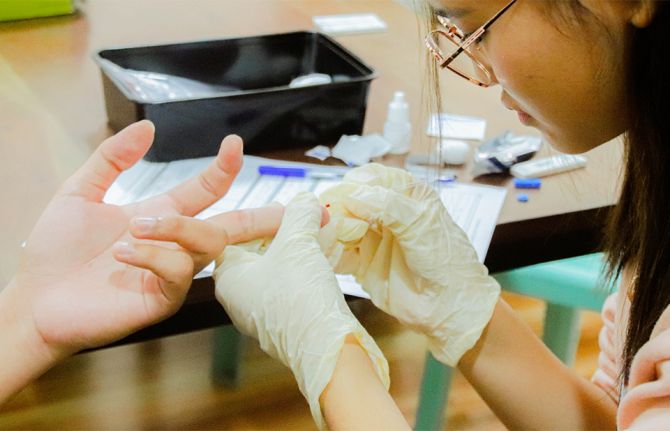
Feature Story
Engaging cities in the HIV response
10 August 2010
10 August 2010 10 August 2010
UNAIDS Executive Director, Mr Michel Sidibé, delivers a keynote speech on "HIV in Cities of the 21st Century” at the International Forum on Cities and Health, 9 August 2010, Shanghai, China Credit: UNAIDS
Approximately half of the world’s population lives in cities. By 2050, seven out of ten global citizens will be living in a “mega-city” of more than 10 million people. In an official visit this week to Shanghai—one of the world’s largest metropolises—UNAIDS Executive Director Michel Sidibé called attention to the central role that cities can play in the AIDS response.
“While it is clear that cities are important to the HIV response, they have not been sufficiently mobilized and supported to act,” said Mr Sidibé, addressing an audience of more than 100 health sector leaders and practitioners from across China. “I believe that it is time for this to change and for cities to take the lead in making HIV history.”
The rapid growth of cities has created conditions where HIV can thrive. Globally, it is estimated that as many as 50% of HIV-positive people live in cities. In some urban areas, the HIV epidemic is so pervasive that it is compares to national epidemics of entire countries.
Noting that city governments have administrative power and well-established systems for delivering social services, Mr Sidibé urged city authorities to mobilize all available resources to ensure universal access to HIV prevention, treatment, care and support. To that end, only a few cities, he said, have shown bold leadership and acted in a timely manner.

UNAIDS Executive Director, Mr Michel Sidibé, delivers a keynote speech on "HIV in Cities of the 21st Century” at the International Forum on Cities and Health, 9 August 2010, Shanghai, China Credit: UNAIDS
Efforts by the city of Bangkok to reduce HIV prevalence among sex workers provide one such success story. In collaboration with health providers, the police, entertainment industry owners, non-governmental organizations and sex workers, authorities in Bangkok launched a city-wide campaign in the early 1990s promoting 100% condom use. Over the course of 20 years, HIV prevalence among the city’s brothel-based sex workers has fallen significantly.
While in Shanghai, Mr Sidibé commended Chinese leaders on the country’s progress in scaling up methadone maintenance treatment and needle exchange programmes in large cities, which have been critical in reversing the HIV epidemic among injecting drug users. “I encourage China to continue to expand these programmes—particularly at the community level—and to reconsider whether drug detention centres are really effective as part of a national strategy to prevent HIV transmission,” he said.
Other cities facing burgeoning HIV epidemics among injecting drug users, such as Sydney, Toronto and Geneva, have implemented cost-effective harm reduction programmes, including needle exchange and opiate substitution therapy, stemming the tide of new HIV infections.
Mr Sidibé challenged China’s cities to be at the forefront of localized AIDS responses that address, in particular, the needs of populations at higher risk of HIV infection, such as men who have sex with men, migrant workers, sex workers and injecting drug users. He called on Shanghai to build on the momentum of Expo 2010, uniting and mobilizing mega-cities of the world to become HIV-free by 2015.
Right Hand Content
Speeches:
Keynote speech by UNAIDS Executive Director, Mr Michel Sidibé at the International Forum on Cities and Health, 10 August 2010, Shanghai, China(en | ch)
Multimedia:
View photo gallery of UNAIDS Executive Director official visit to China, August 2010



